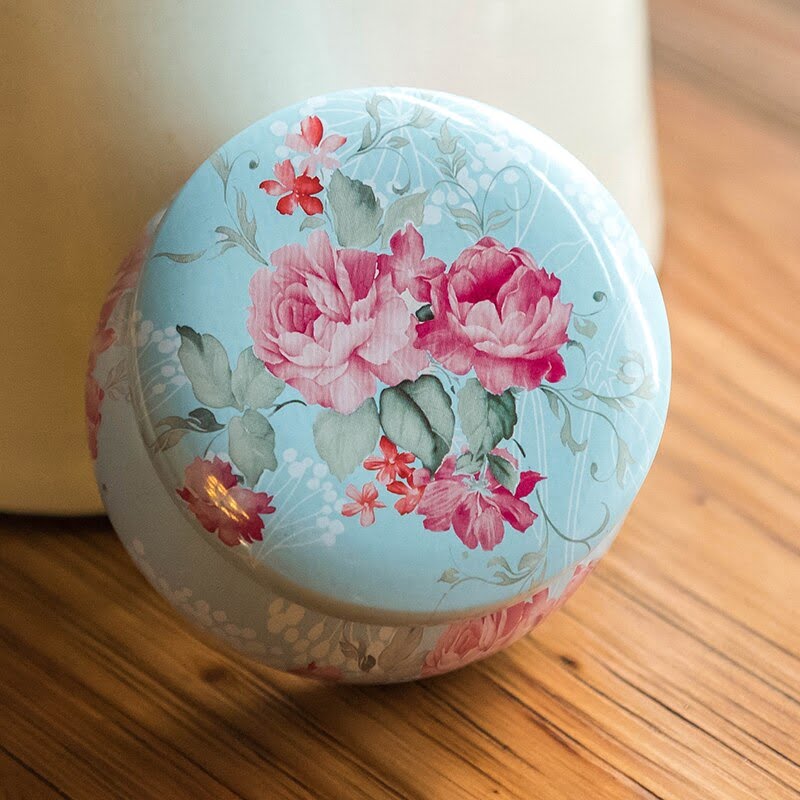Candle making is a popular hobby that allows individuals to create their own unique and beautiful candles. From scented candles to decorative ones, this craft has become a beloved pastime for many. However, as with any activity involving heat and chemicals, there are potential risks involved. In this article, we will delve into the world of candle making and explore the dangers that may accompany this creative pursuit.
The art of candle making dates back centuries, with its origins rooted in both practicality and spiritual significance. Today, it encompasses a range of techniques and styles, appealing to both experienced artisans and beginners alike. With the rise in popularity of homemade products, more and more people are turning to candle making as a way to express their creativity and enjoy the benefits of handmade goods.
While candle making can be a rewarding and enjoyable experience, it is essential to be aware of the potential hazards involved. From fire hazards to harmful chemicals, there are risks that must not be ignored. In the following sections of this article, we will examine these dangers in detail, shed light on common misconceptions surrounding candle making safety, and provide guidance on how to safely enjoy this craft as a hobby.
So join us as we embark on the journey into the world of candle making. Whether you are a seasoned candle maker or considering taking up this craft for the first time, it is important to be well-informed about the potential risks associated with it. By understanding these dangers and taking necessary precautions, you can ensure a safe and enjoyable experience while delving into the art form of candle making.
The Art of Candle Making
Candle making is an art form that has been practiced for centuries and continues to be popular today. It involves melting wax, adding fragrance and color, and creating beautiful candles for various purposes. Understanding the craft of candle making requires knowledge of the different types of waxes used, as well as the techniques and tools involved.
One of the main appeals of candle making is the creativity it allows. Individuals can choose from a wide range of colors, scents, and shapes to create candles that suit their personal preferences or match their home decor. The process of molding or pouring wax into molds can be therapeutic and satisfying, providing a sense of accomplishment as each candle takes shape.
Additionally, many people enjoy giving homemade candles as gifts or using them for relaxation purposes. Scented candles are often used in aromatherapy, where different fragrances can help promote relaxation, focus, or even relieve stress. The ability to customize candles with specific scents adds another level of appeal to this craft.
Understanding the art of candle making also requires knowledge about different types of waxes used in the process. Some common types include paraffin wax, soy wax, beeswax, and gel wax. Each type has its own unique characteristics and benefits. For example, paraffin wax is commonly used because it is affordable and easy to work with, while soy wax is popular among those looking for a more natural alternative.
| Types of Waxes | Main Characteristics |
|---|---|
| Paraffin Wax | Affordable and easy to work with |
| Soy Wax | Natural alternative to paraffin wax |
| Beeswax | Natural and eco-friendly option, with a subtle honey scent |
| Gel Wax | Creates transparent candles, ideal for embedding objects or creating unique designs |
The Dangers to Watch Out For
Candle making is a popular hobby that allows individuals to express their creativity while also enjoying the calming and ambient qualities of candles. However, it’s important to recognize that there are potential risks and dangers involved in this craft that should not be overlooked. In this section, we will explore some of the hazards associated with candle making and why it is crucial to be aware of them.
One of the primary risks involved in candle making is fire hazards. The process of melting wax, handling hot substances, and working with open flames can increase the likelihood of accidents and fires if proper precautions are not taken. It is essential to have a well-ventilated workspace, use appropriate heat sources such as double boilers or melters, and never leave candles unattended while they are burning.
Another concern when it comes to candle making is the potential exposure to harmful chemicals. Many conventional candles contain paraffin wax, which can release toxic fumes when burned. Additionally, certain fragrances and dyes used in candles may contain chemicals that can irritate the skin or respiratory system. It is crucial to choose high-quality materials that are free from harmful additives or opt for natural alternatives like soy or beeswax candles.
Furthermore, the handling of hot wax and various tools used in candle making poses a risk of burns and other injuries. Accidental spills, mishandled equipment, or insufficient protective gear can lead to serious burns. It is vital to use caution when working with hot substances and always wear appropriate clothing and protective gloves.
Fire Hazards
When it comes to candle making, one of the most important aspects to consider is fire hazards. While candles may provide a warm and inviting ambiance, they also pose certain risks if not handled with caution. This section will shed light on the burning truth behind candle making and the potential fire hazards associated with this craft.
One of the primary fire hazards in candle making is the risk of a candle tipping over or being knocked over by accident. This can easily happen if proper care is not taken when setting up or handling candles during the creation process. The hot wax can spill onto surfaces and ignite nearby flammable materials, such as fabric or paper. It is crucial to ensure that candles are always placed on stable and heat-resistant surfaces to prevent accidents.
Additionally, another fire hazard in candle making is improper use of fragrance oils or dyes that contain flammable substances. These substances can increase the likelihood of a candle catching fire, especially if they come into contact with an open flame. It is important to carefully follow instructions and guidelines provided by manufacturers when using additives such as fragrances or dyes, ensuring that they are safety-tested for use in candles.
To minimize fire hazards in candle making, it is essential to prioritize prevention and safety measures. This includes having adequate ventilation in your workspace to prevent the accumulation of flammable vapors from waxes or other materials used in candle making. Furthermore, keeping a fire extinguisher nearby and having a clear evacuation plan in case of emergencies are crucial precautions to take.
By understanding and addressing these fire hazards associated with candle making, enthusiasts can continue enjoying this craft safely while minimizing any potential risks involved. With proper care, attention to detail, and adherence to safety guidelines, individuals can create beautiful handmade candles without compromising their well-being or that of their surroundings.
Harmful Chemicals
Understanding the Chemicals Used in Candle Making
Candle making involves the use of various chemicals and additives to create different colors, scents, and textures. While these chemicals are essential for achieving desired results, it is important to be aware of their potential health risks. One key concern is the release of harmful volatile organic compounds (VOCs) into the air when candles are burned. These VOCs include formaldehyde, benzene, and toluene, which can have detrimental effects on both human health and the environment.
Effects on Indoor Air Quality
When candles containing certain chemicals are burned, they emit soot particles that can contribute to poor indoor air quality. These particles may contain toxic substances such as heavy metals like lead or cadmium, which can be harmful if inhaled over a prolonged period of time. In addition to harming human health, these airborne particles may settle on surfaces and cause damage or discoloration.
Precautions for Safe Candle Making
To minimize the health risks associated with candle making, it is important to take certain precautions. Firstly, opt for natural waxes such as soy wax or beeswax instead of paraffin wax. Natural waxes produce fewer pollutants when burned and generally have a lower melting point, reducing the risk of burns during the candle-making process.
Additionally, choose fragrance oils that are specifically formulated for candle making rather than using essential oils undiluted. Some essential oils can become toxic when exposed to high temperatures while burning. Also, consider using natural colorants like mica powders or plant-based dyes instead of synthetic colorants that may contain harmful chemicals.
Regularly ventilating your workspace while making candles can help reduce exposure to any potentially harmful fumes or toxins released during the process. It is also crucial to wear appropriate protective gear such as gloves and goggles to minimize direct contact with the chemicals and ensure proper skin protection.
By taking these precautions, candle makers can enjoy their craft while minimizing the health risks associated with the use of harmful chemicals.
Safety Measures
Candle making can be a fun and rewarding hobby, but it’s important to take the necessary precautions to ensure your safety. By following some essential safety measures, you can minimize the risks associated with candle making and enjoy this craft safely. Here are some important precautions to keep in mind:
Proper Ventilation
Working in a well-ventilated area is crucial when making candles. This helps to prevent the buildup of potentially harmful fumes from fragrance oils, dyes, and other chemicals used in candle making. Ensure that you have good airflow by opening windows or using fans to circulate air.
Use Appropriate Equipment
Using the right tools and equipment is vital for your safety during candle making. Make sure you have heat-resistant containers, such as double-boiler pots or melting pitchers specifically designed for candle making. Additionally, use dedicated thermometers, wax melters, and pouring pitchers to prevent accidents and injuries.
Protective Clothing and Gear
Wearing appropriate clothing and protective gear is essential to minimize the risk of burns or injuries while working with hot wax. Consider wearing long sleeves, pants, closed-toe shoes, and heat-resistant gloves when handling hot materials. It’s also recommended to have an apron to protect your clothes from spills or splatters.
Handle Wax with Caution
Hot wax can cause severe burns if not handled carefully. Always remember to handle melted wax cautiously by using heat-resistant gloves or oven mitts when pouring or stirring it. Avoid touching heated surfaces directly and be mindful of any open flame or heat sources nearby.
Fire Safety
Candle making involves working with open flames, so it’s essential to prioritize fire safety measures throughout the process. Keep flammable materials away from the working area, ensure candles are placed on heat-resistant surfaces, and never leave a burning candle unattended. Have a fire extinguisher nearby and familiarize yourself with its proper use.
By incorporating these safety measures into your candle making routine, you can minimize the potential dangers associated with this craft. Remember to always prioritize safety and take precautions to protect yourself and your surroundings while indulging in this enjoyable hobby.
Tips and Tricks
Candle making can be a rewarding and enjoyable hobby, but it is important to take the necessary precautions to ensure safety. By following some tips and tricks, you can minimize the risks associated with candle making and safely enjoy this craft.
Choose the Right Workspace
When engaging in candle making, it is crucial to have a dedicated workspace that is safe and well-ventilated. Your workspace should be clear of any flammable materials and located away from children or pets. Additionally, it is recommended to cover your work surface with a heat-resistant material such as aluminum foil or a craft mat to protect it from heat damage.
Use Quality Materials
Using high-quality materials in your candle making process is essential for both safety and longevity of the candles. Opt for natural waxes such as soy wax or beeswax, which are less likely to emit harmful fumes when burned. Similarly, choose lead-free wicks and fragrance oils specifically designed for candle making. This will help minimize any potential health risks associated with using low-quality or hazardous materials.
Follow Proper Heating Techniques
One of the most important aspects of candle making safety is proper heating techniques. Whether you are melting wax in a double boiler or using a microwave, make sure to follow the instructions provided by the manufacturer closely. Avoid overheating wax as it can become volatile and potentially cause fires or burns. Always use appropriate heat-resistant containers for melting wax and handle them with care using oven mitts or tongs.
By implementing these tips and tricks into your candle making routine, you can safely enjoy this creative hobby without putting yourself or others at risk. Remember to always prioritize safety by staying informed about potential hazards and taking proactive measures to prevent accidents or injuries during the process.
Recognizing Warning Signs
Candle making can be a relaxing and enjoyable hobby, but it is important to be aware of potential dangers involved. By recognizing warning signs in candle making supplies and techniques, you can ensure a safer experience overall.
Firstly, it is crucial to pay attention to the quality of the materials used in candle making. One red flag to look out for is if the wax or fragrance oils have an unusual scent or appear discolored.
This could indicate that they are old or contaminated, which can affect the quality and safety of the candles. Additionally, if the wick appears frayed or has any black soot on it, it may not burn properly and could pose a fire risk.
Another warning sign to be aware of is if there are any cracks or chips in the containers or molds used for candle making. These imperfections can cause the wax to leak and potentially lead to a fire hazard. It is also important to avoid using containers made of flammable materials and opt for heat-resistant options instead.
In terms of techniques, one red flag to watch out for is overheating the wax during melting. If the wax becomes too hot, it can ignite and result in a dangerous fire.
It is recommended to use a double boiler method and closely monitor the temperature throughout the process. Additionally, if you notice any strange popping sounds when pouring fragrance oils into the melted wax, this could indicate that water has come into contact with the hot wax, creating a potential safety issue.
References
- Candle Making Safety Tips – Southwest Candle Supply
- The Dos And Don’ts Of Candle Making Safety – CandleScience
- Candle Making Safety Tips You Need to Know – The Spruce Crafts
Myth Busters
One of the reasons why some people may hesitate to try candle making is due to common misconceptions and concerns about its safety. In this section, we will debunk these myths and provide accurate information to help put any worries to rest.
One common misconception about candle making is that it requires specialized equipment and expensive materials. While there are professional-grade tools available for those who want to take their candle making to the next level, beginners can start with basic supplies that are easily accessible and affordable. All you really need are wax, wicks, fragrance oils or essential oils, and containers. Additionally, many candle making techniques can be done safely at home without the need for complex equipment.
Another concern that people have is the risk of fires or accidents while making candles. It’s true that working with hot wax and an open flame does come with inherent risks, but by following proper safety precautions, these risks can be minimized.
Some important safety measures include always working in a well-ventilated area, keeping flammable materials away from your workspace, using a double boiler or a heat-resistant container when melting wax, and never leaving your candles unattended while they are lit.
There is also a misconception that all candle fragrances contain harmful chemicals that can be dangerous when burned. While it’s true that some cheaper or low-quality candles may contain potentially harmful substances such as lead wicks or synthetic fragrances known as phthalates, this is not the case for all candles on the market.
By choosing high-quality ingredients like natural wicks made from cotton or wood and using fragrance oils or essential oils from reputable sources, you can ensure a safer candle-making experience.
It’s important to address these common misconceptions and concerns surrounding candle making safety in order to encourage more people to explore this enjoyable craft without fear. By debunking these myths and providing accurate information about the safety measures involved in candle making, we hope to inspire beginners to try their hand at creating their own beautiful and safe candles.
The Bottom Line
In conclusion, after exploring the world of candle making and delving into the potential risks involved, it is important to weigh the pros and cons to determine if it is truly a dangerous craft. While there are certain dangers associated with candle making, such as fire hazards and the use of harmful chemicals, these risks can be mitigated by following essential safety measures and taking necessary precautions.
One of the biggest advantages of candle making is the appeal and satisfaction that comes from creating something unique and beautiful. It allows individuals to express their creativity while also providing an opportunity for relaxation and stress relief. Additionally, candles can make wonderful gifts or serve as a way to add ambiance and fragrance to one’s home.
However, it is crucial to recognize that safety should always be a top priority. By being aware of potential warning signs in candle making supplies and techniques, enthusiasts can avoid accidents or adverse health effects. Investing in high-quality materials, properly storing flammable substances, and using protective gear when necessary are all essential steps in ensuring a safe candle making experience.
Ultimately, whether or not candle making is truly dangerous depends on the level of caution exercised by each individual practitioner. By understanding the potential risks involved and taking appropriate safety measures, hobbyists can enjoy this craft without compromising their well-being. So why not explore the world of candle making with care, creativity, and a commitment to safety?
Frequently Asked Questions
Should I wear a mask when making candles?
Wearing a mask when making candles can be a sensible precaution, especially if you are working with certain types of wax or fragrance oils that may release potentially harmful particles or fumes. Some waxes, like paraffin, can emit soot and volatile organic compounds when heated, which can irritate the respiratory system if inhaled frequently and in large quantities.
Additionally, fragrance oils often contain chemical substances that may not be safe to breathe in directly. Wearing a mask, particularly one designed for filtering out particulates, can help reduce your exposure to these potentially harmful substances and protect your respiratory health.
Are fumes from candles harmful?
The fumes emitted by candles can indeed be harmful depending on the materials used. Traditionally made paraffin wax candles often produce soot particles when burned, which pose risks when inhaled over time as they may contribute to respiratory problems and indoor air pollution.
Additionally, some scented candles can release volatile organic compounds (VOCs) when burned, such as benzene and toluene, which have been associated with negative health effects. To minimize the potential harm from candle fumes, it is recommended to choose cleaner-burning alternatives like soy wax or beeswax candles that do not release significant amounts of pollutants into the air.
Do you need ventilation when making candles?
Ventilation is crucial when making candles to ensure proper airflow and remove any harmful fumes or odors generated during the process. Adequate ventilation helps dissipate volatile compounds released by materials such as waxes, colorants, or fragrance oils that may be present while making candles.
Good ventilation also helps maintain a pleasant working environment by reducing any strong smells produced during candle-making activities. Opening windows or using exhaust fans can assist in promoting fresh air circulation and preventing any buildup of potentially hazardous airborne substances while providing a safer space for candle-making processes.

Welcome to my candle making blog! In this blog, I will be sharing my tips and tricks for making candles. I will also be sharing some of my favorite recipes.




